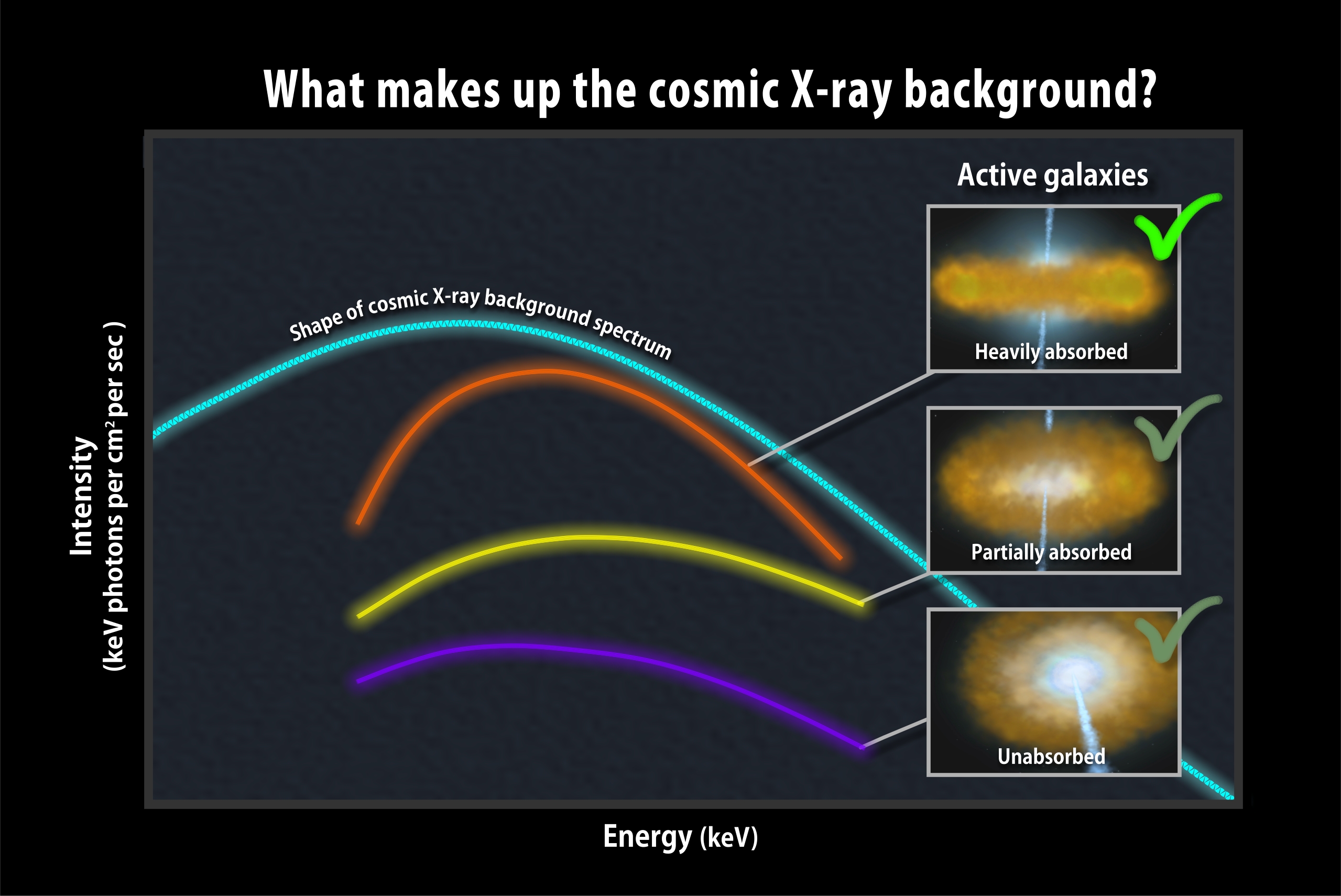Swift Special Exhibit
The Hard X-ray Background

Heavily absorbed active galaxies (orange curve) are thought to make the greatest contribution to the cosmic X-ray background (light blue). Both have similar spectral shapes and peak at similar energies. Adding in the known contributions from less-absorbed active galaxies (yellow and purple), appears to fully account for the background.
When X-ray telescopes look at the sky, they see a uniform background of high energy X-rays. However, it is believed that much of this background is the result of individual far away X-ray sources. The Burst Alert Telescope on Swift is capable of observing this background and resolving finer details than ever before. It is expected that many of the far away sources will be Seyfert type Active Galactic Nuclei that are oriented with the gas and matter-filled sides of their galaxies facing us. The gas around Seyfert AGNs normally blocks lower energy photons from reaching us, but higher energy photons like hard X-rays should be detectable with Swift, providing information about the type objects that are responsible for the hard X-ray background.
Published: September 2005
Text Reviewed: September 2018


